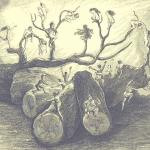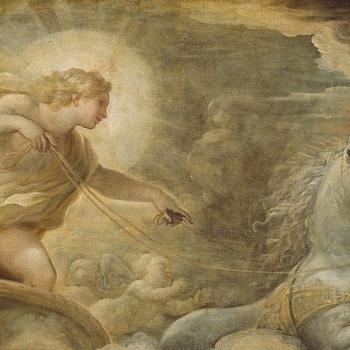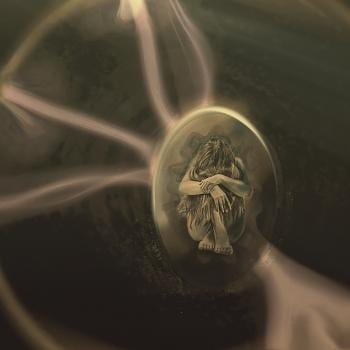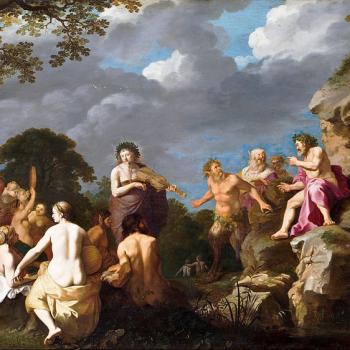Winter time is an active religious time in the Hellenic tradition with deep significance. There are many aspects to cover that I want to talk about.

Firstly, the attic month Poseideon /Ποσειδεών corresponds between our December and January. The month is dedicated to the Poseidon. If you choose to rectify the ancient calendar for solar usage, the entire month of December corresponds to Poseideon, the month of Poseidon.
The main celebrations during this month include the Phalliphos (Φαλληφόρια) a phallic/fertility festival celebration in honor of Dionysus. The Haloa (Αλώα) a tripartite ritual for Demeter, Dionysus, and Poseidon. The Haloa occurred at Eleusis without the Hierophant; priestess conducted the festival of bloodless offerings.
The Poseidea (Ποσείδεα) in honor of Poseidon occurred in Athens. While it may seem odd that a ‘sea God’ is prominent in the winter, always keep in mind that the ancient Greek society was very conscious of agriculture. The cultivation of the earth is a central point in Greek religion overall, many religious festivals are tied to agriculture in some way. This is why Demeter and Dionysus are also present along with Poseidon.
Poseidon’s worship extends back into Mycenean times. Poseidon is a composite of the Mycenean Poseidaon and Dorian Poteidan. It is speculated that His name means Husband of Earth, from potei -Lord and da– possibly earth, an alternative to Ge. It is well documented that Poseidon and Demeter were worshipped together in Mycenean times, a practice that was maintained down the centuries.
The combination of Demeter, Dionysus, and Poseidon together this month suggests to me this is a period of time where we should focus on regeneration. As the nights grow long, the earth becomes barren, we wait for the regeneration of the word. The wintery waters (Poseidon) swell the soil to preserve the earth mother (Demeter), sustaining Her until life is restored (Dionysus). Thus, we also ought to mimic this natural process ourselves. We too should be prepared for the long winter and the coming regeneration by conserving and nourishing ourselves during the winter.
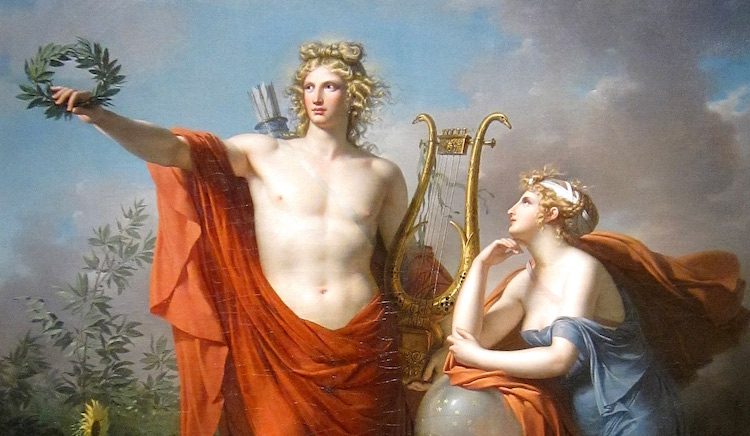
While many in the developed world do not suffer in the same way the ancients did during the winter, winter can be emotionally difficult for many. We still need to learn from the Gods, understanding their processes/activities in the world, adapting to live harmonious with Them and our world. During this time, I suggest it would be helpful to keep ourselves active in ways that helps to maintain ourselves from becoming lost in the darkness of the winter so that it does not envelope us completely. We luckily can travel to sunnier places!
As we sustain ourselves, the solstice and the ‘birth of the sun’ gives us hope for the increasing of light and the expectation of restored life. The ‘birth’ of Herakles Triesperos is celebrated after the winter solstice. Today, the Greek communities of Y.S.E.E celebrate Triesperos, as it is part of the common calendar we share. Herkales is called Triesperos (three evenings) because in myth Zeus stayed with Alcmene for three nights. He requested that Helios unharness his chariot for a day to extend the evening. This extension of night corresponds to the apparent lack of motion from the sun during the solstice. Herakles is in this regard a solar figure and his twelve labors correspond to the twelve zodiac signs.
Dionysus is also ‘born’ after the solstice. Dionysus has a solar function/affiliation with Apollo as they are closely related. Dionysus is ‘buried’ at Delphi and reigns there while Apollo is ‘away’ in the winter. When Apollo ‘returns’ to Delphi that occasion was celebrated as the Theophania, his ‘manifestation’. Dionysus’ birth and Apollo’s Theophania later became Jesus’ birthday (December 25th) and Theophania (January 6th) also known as the Epiphany in Christian tradition.
Before the Theophania arrived, people prepared with purification of water. Athenians would cleanse the statue of Athena by the sea. Today, Greeks continue this practice by washing icons and other sacred items to restore/maintain their power. Since the Theophania of Apollo is his manifestation to us once again, we purify ourselves to greet the God’s return. Purification is an important element in Greek religion. Thus, if you so do decide, before sunrise on January 6th you can use salt water to cleanse yourself, ritual items, and sacred spaces in your home.
Apollo’s Theophania restores hope banishes fear and malevolent forces. In Greek folklore, between Christmas and the Epiphany, the Kallikantzaroi, goblin type creatures with shapeshifting abilities, run amuck on earth and are banished away at the Epiphany/Theophania. The Theophania of Apollo should be seen as the restoration of cosmic order with the slow increasing of light and diminishing darkness. With the increasing light outside, I hope that the light within each of us be restored and increased with the blessing of the Gods.



